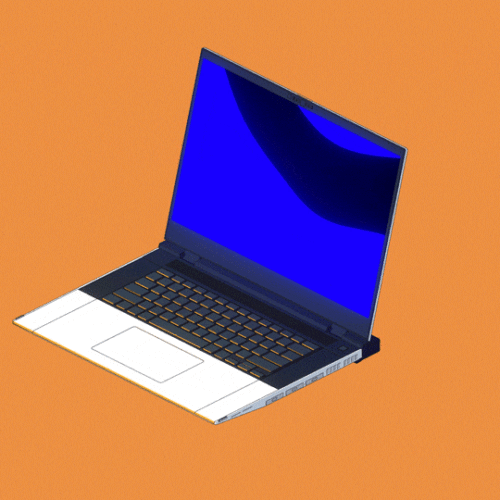What if your laptop could grow with you?
Thankfully, not every PC maker feels the same way. For the last two years, a California start-up called Framework has made a name for itself by designing laptops that are simple to repair and upgrade. And now that the young company has some experience under its belt, it’s trying something new: developing a laptop you can more deeply customize all by yourself.
Let’s say you’re a gamer — you’ll be able to upgrade the graphics processing unitor GPUin the company’s forthcoming 16-inch laptop by just sliding it into an expansion bay. If gaming is the last thing on your mind, imagine slotting in a pair of high-capacity solid state drives for all your home movies to live on instead.
“We expect to see some really interesting use cases come out of this,” said Framework CEO Nirav Patel in an interview.
You can also customize the keyboard and trackpad to some extent, something that’s practically unheard of in even today’s flashiest laptops.
Left-handed folks may want their trackpad shifted to the left a bit, so it’s easier to reach with their thumbs — in that case, you can use an included tool to pop out the trackpad, move some spacers around, and drop that trackpad on the left side of machine. (Righties could do the same pretty easily.)
The same philosophy applies to the laptop’s keyboard: you can shift it left or right to suit your tastesand even swap in a different-sized keyboard that makes room for a drop-in number pad. And because Framework is making reference designs and documentation for these customizable systems available to everyone, Patel expects to see even stranger add-ons for his laptops.
“As proof of concepts, we have second displays that are the size of the numpad,” he added. “So you can actually slot out that numpad and slot in the display. But you can also do other things, like macro pads or scroll wheels or sliders, whatever else.”
Framework’s existing laptops already include support for what the company calls “expansion cards,” tiny modules you stick into the sides of the machines to change their selection of ports or add storage. Between those and the options Patel plans to deliver in its next wave of laptops, you can configure yourself a machine that is uniquely yours — a rarity in an age of one-size-fits-all gadgetry.
In a way, these plans hark back to the olden (and some would argue golden) days of laptops.
Nerds of a certain age will probably remember juggling a collection of PC cards that physically slid into bays in their notebook computers — for many, these kinds of cards offered additional storage or a first taste of WiFi, since that feature we take for granted didn’t come standard in laptops for quite a while.
But, if history’s graveyard of gadgets is any indication, Framework may not have an easy road ahead of it. That’s because more than a few products that hinged on modularity or upgradeability throughout the years either pivoted away quickly or died entirely.
Perhaps the highest-profile example is nearly a decade old now. Google famously embraced a similar idea: a modular smartphone, code-named Project Ara, that let users mix and match different components into a single frame, or “endoskeleton.”
Like Framework, Google believed that — rather than completely trashing a smartphone after you’d had it for a few years — users should be able to swap out parts piecemeal to suit their needs. If the camera no longer felt up to stuff, for example, you could replace that module for a more modern one. The same went for the usual bits that start to show their age after a while, like the battery and the screen.
The fact that the phone in your pocket is a single slab of glass, metal and plastic tells you everything you need to know about Ara’s fate. Despite firing up the imaginations of smartphone and sustainability fans alike, Google shelved the project in 2016.
That same year, LG released a modular smartphone called the G5 along with a series of accessories called “Friends” that flopped almost immediately. The company never revisited the modular phone concept, and stopped making smartphones entirely in 2021.
More recently, Dell pushed an Alienware-branded gaming laptop in 2019 that promised customers could easily swap out the CPU and GPU inside for different versions. That was true, sort of: A year later, once new models had been released, it became clear that owners of the earlier machines couldn’t drop in the newer, high-performance parts from 2020. Users were none too pleased, so they sued.
(Since then, Dell has started dabbling with easier-to-repair laptop designs, too, though you can’t buy one of the company’s “Project Luna” machines yet.)
The industry’s lousy track record of successful, modular gadgets is definitely a bit sobering, but it doesn’t mean Framework’s plans are doomed by default.
Anshel Sag, principal analyst at the research firm Moor Insights & Strategy, says that’s partly because other companies that have tried to build devices like these “weren’t built from the ground up as modular and repairable.”
“Framework has proven that it can continue down this upgradable and repairable path where others have failed,” he added.
The company plans to stick to that path, even as demand for consumer tech products likes PCs is expected to continue sinking. Patel said Framework’s business grew year over year, which he takes as a sign that the company’s “products and philosophy are resonating” while its competitors continue to struggle. Patel wouldn’t say by how much Framework grew in terms of revenue or market share.
So, could a more customizable computer be right for you? It’s possible, but it’s hard to say just yet — Patel says the company’s modular 16-inch laptop won’t ship until later this year.





